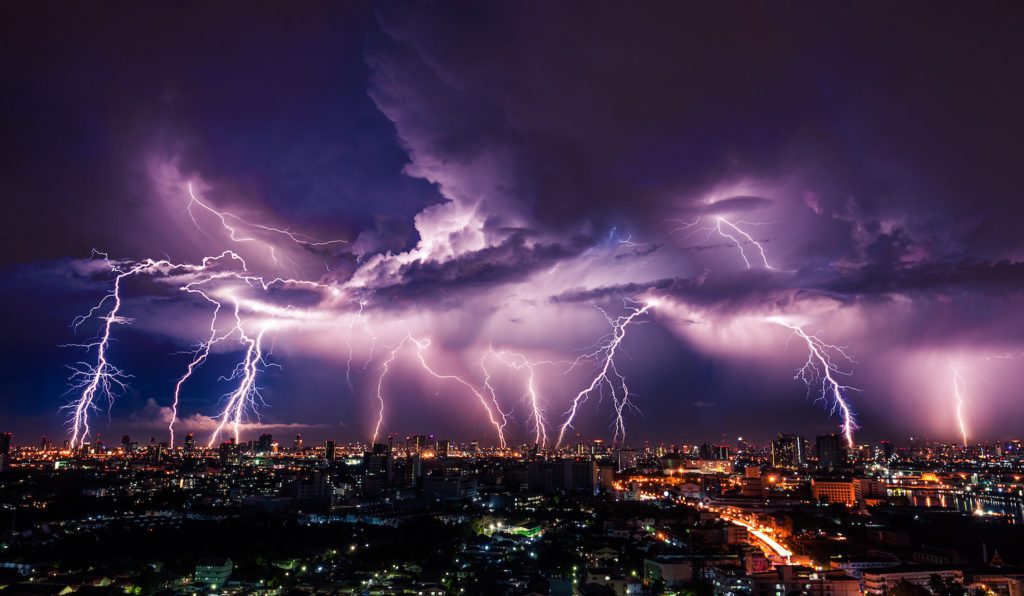There’s nothing like spring. The weather is beautiful, flowers and trees are blooming, and we all head outside to enjoy ourselves. However, with the advent of spring also comes unpredictable and volatile weather as warm moist air collides with cool dry air creating thunderstorms, flooding rains and even tornadoes.
Because spring weather can be so erratic, it is important to be prepared for the worst to avoid property damage, or worse, injury and death. While there’s nothing you can do about the weather, you can make sure you have planned ahead to minimize damage and avoid disaster.
Prepare Your Yard
- Remove any dead or rotting limbs from the trees in your yard, particularly those that are near your home or building.
- Clean up fallen limbs or other debris from your yard, including things that can become projectiles in high winds.
- If you’ve recently planted young trees, make sure they are securely staked to the ground.
- Check your gutters and make sure they are clean. If they are full, water is forced under your shingles which can lead to roof leaks.
- Secure outdoor furniture and other objects that can blow away or cause damage.
Create an Emergency Kit
Having an emergency kit on hand is a good idea in general, but especially important in case of storms. Everyone that lives in your home should know where it is, and if you home has multiple stories, you may want to have one on each floor. Make sure it contains:
- A battery-operated flashlight and extra batteries for it
- An emergency evacuation and shelter plan with routes to safety mapped from each room of the house
- A list of important personal information, including contact information for neighbors, family and friends, a copy of your homeowners insurance policy, medical information for each family member and telephone numbers for your utility companies
- A 3-5-day supply of bottled water and nonperishable food
- Blankets or sleeping bags
- Personal hygiene items
- A first aid kit (here is a link to what the Red Cross says one should include)
- A battery-operated weather radio and spare batteries for it.
During a Storm
Sadly, simply being indoors does not protect you from the effects of a storm so here are some tips to reduce your risk of getting struck by lightning or injured in some other way.
- Avoid contact with water – such as bathing, showering, washing dishes, etc. – as lightning can travel through your plumbing.
- Stay away from windows, skylights, and doors.
- Make sure all your electrical equipment, like TVs, computers, and radios, are plugged into surge protectors. If they are not, avoid using them during a thunderstorm.
- Avoid concrete floors and walls, and certainly don’t lie on a concrete floor or lean against a concrete wall. Lightning can travel through any metal wires or bars in concrete.
- Monitor local news or use your weather radio for emergency watches or warnings.
In future posts, we will discuss other things you can do to protect your home, commercial building, and its inhabitants during inclement weather. And if you do incur damage during a storm, we are always ready, 24/7, to help clean up the damage and returning your home to its original condition.

